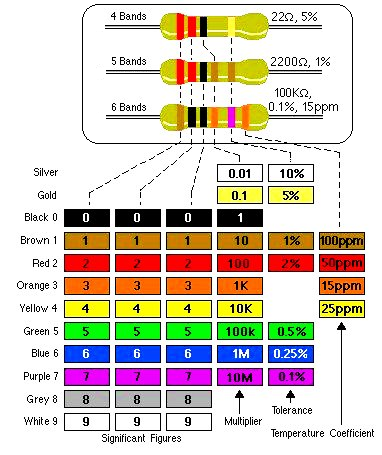What is resistance -basic
 |
| resistance |
What is resistance The nature or properties of a conductive substance that interferes with the flow of current through a conductor are called tectonics. The object that keeps the religion of resistance intact is called a register. Its symbol is R (R) and the unit is Ohm.
Register Symbol:
 |
| Register Symbol |
Registers can look different. Below are some types of registers.
 |
| Resistance |
Variable Resistor: There are some registers whose values can be changed. These are called variable resistors. These can look different. Below is a picture of some variable registers.
Resistance Register Value.
These registers have certain values. But it is not possible to write the value on such a small thing. So the value of the register is expressed through the color code. Make sure that each register has some tiny spots of different colors on it. In fact, these spots indicate the value of all these registers. These colored spots are called the color code of the register.
Now we will see how to determine the value of the register.
The value of a register can be determined in two ways.
1) Through color code
2) Through the meter
Determining the value of the register through color code:
We already know that the color spots on the register have certain values. We will remember a line to remember these values.
Resistor colour coding calculator
B B ROY Good Boy Very Good Worker. (BB Roy Good Boy, Very Good Worker)
Here the English capital letters (capital letters) indicate some color in stages.
 |
| Resistor-color-code |
Tolerance:
Gold = +/- 5%
Silver = +/- 10%
Tolerance with no color = +/- 20%
Take a good look at the color code of the register. A colored spot has been removed from the first three spots. This removed color band is called Tolerance. This is to start calculating the color code from the opposite side of the tolerance band. The first color on the opposite side of tolerance is called the "first color band", the second color is called the "second color band", and the third color is called the "third color band". Most registers are usually four-band. Also, some five-band registers are seen to be used. It doesn't matter how many bands are registered. The method of determining the value is all the same.
In the case of determining the value (the value of the first color) then (the value of the second color) then (the value of the third color, exactly as many zeros (0) should be set.
Such as the resistance formula
Suppose the number of colors on a register is respectively: Brown Black Red Gold
We know from the color code of the register,
Brown = 1
Black = 0
Red = 2
Gold = tolerance = +/- 5%
Therefore value = 1 0 00 +/- 5%
Here, since the first color is Brown whose value is 1, so I put 1 first. The second color is Black whose value is zero (0) so I set 0. Now, look at the third color Red whose value is two (2). Then you have to put two zeros. Then the whole value is = 1000.
Ohm since the unit of the register. So its value is = 1000 ohms. (1000)
Dividing this value by 1000, its unit will be = (1000 ÷ 1000) KΩ = 1KΩ or (1 kWh).
Resistance Tolerance
The value of the resistor changes with the temperature change. And the value of this change can be calculated by calculating the value of this tolerance.
For example, there is a tolerance color of Gold whose value is +/- 5%. We got the value of the register
1 kilo ohm and 5% of this 1-kilo ohm is = (1 * 5%) = 0.05.
Therefore,
1 + 0.05 = 1.05
1 - 0.05 = 0.95
So the value of this 1 kg ohm register can be as low as 0.95 to 1.05.







0 Comments
Leave a Reply...